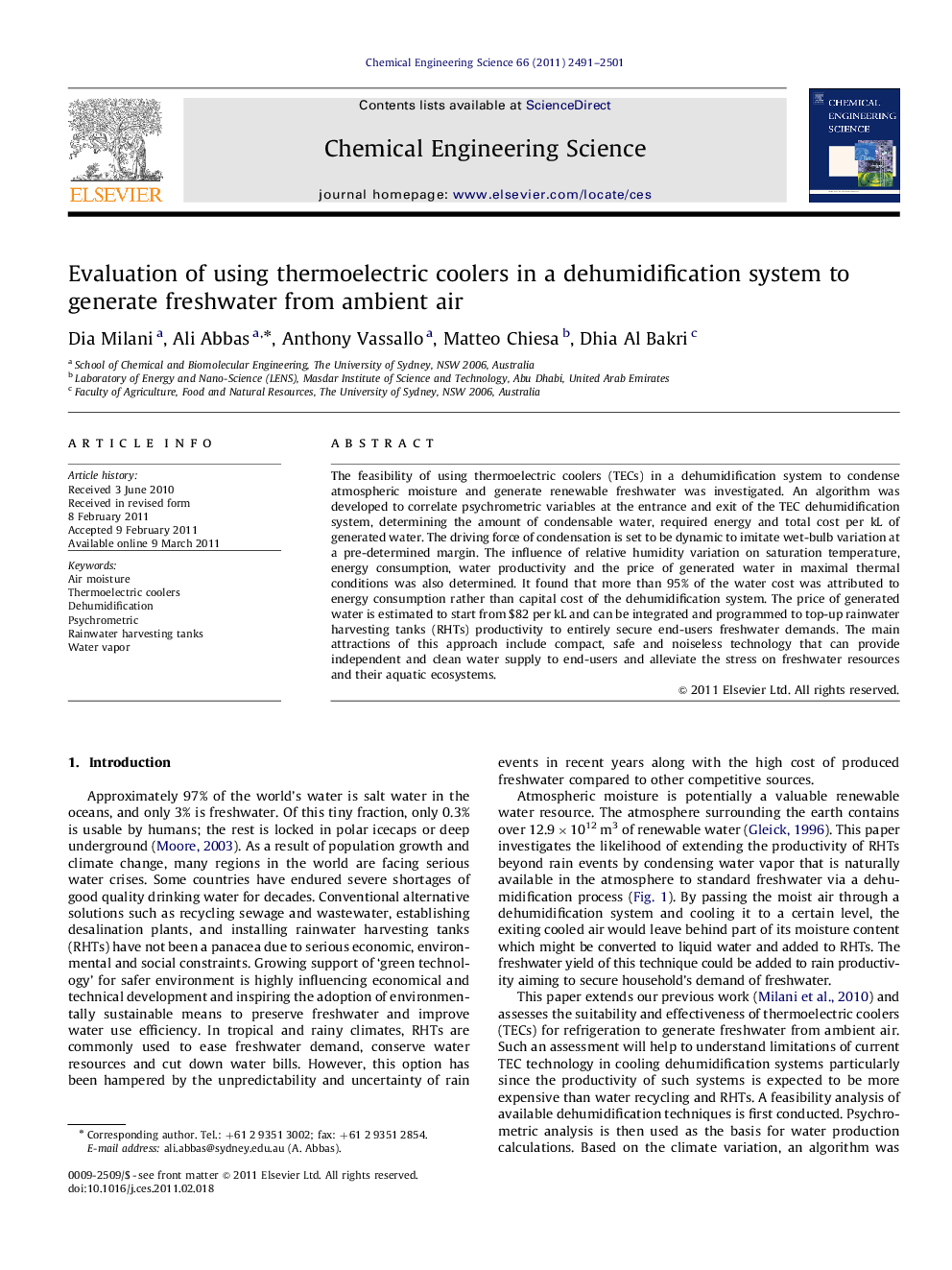| Article ID | Journal | Published Year | Pages | File Type |
|---|---|---|---|---|
| 156328 | Chemical Engineering Science | 2011 | 11 Pages |
The feasibility of using thermoelectric coolers (TECs) in a dehumidification system to condense atmospheric moisture and generate renewable freshwater was investigated. An algorithm was developed to correlate psychrometric variables at the entrance and exit of the TEC dehumidification system, determining the amount of condensable water, required energy and total cost per kL of generated water. The driving force of condensation is set to be dynamic to imitate wet-bulb variation at a pre-determined margin. The influence of relative humidity variation on saturation temperature, energy consumption, water productivity and the price of generated water in maximal thermal conditions was also determined. It found that more than 95% of the water cost was attributed to energy consumption rather than capital cost of the dehumidification system. The price of generated water is estimated to start from $82 per kL and can be integrated and programmed to top-up rainwater harvesting tanks (RHTs) productivity to entirely secure end-users freshwater demands. The main attractions of this approach include compact, safe and noiseless technology that can provide independent and clean water supply to end-users and alleviate the stress on freshwater resources and their aquatic ecosystems.
